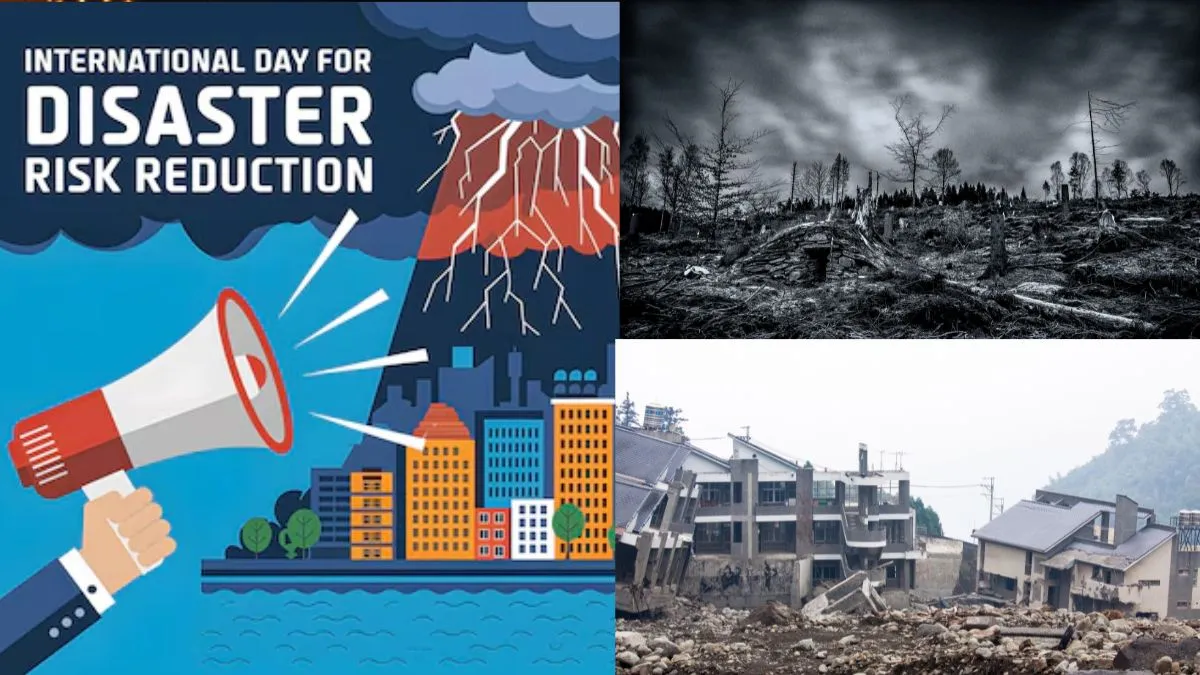- By Aditi Priya Singh
- Mon, 13 Oct 2025 11:23 AM (IST)
- Source:JND
Every year, the world faces devastating effects of natural disasters such as floods, earthquakes, cyclones, droughts and wildfires. In addition to taking lives, these calamities devastate entire communities, homes, and forests. People from all over the world unite on International Disaster Reduction Day 2025 to increase awareness of ways to prevent or lessen the harm that these natural disasters cause. As with disasters, prevention is always preferable to treatment.
We can lower risks and protect our planet by being prepared in advance, planting trees, managing waste, conserving water, and adopting eco-friendly practices. Building stronger and safer communities is a major responsibility of individuals, governments, and educational institutions.
50+ Essential Steps To Prevent Natural Disasters Worldwide
This day serves as a reminder that even modest efforts, such as utilising renewable energy sources, preventing deforestation, and educating others, can have a significant impact. Here are 50+ crucial actions that can help avert natural disasters and create a more secure and sustainable world.
Environmental Protection Measures
1. Plant more trees to prevent soil erosion and landslides.
2. Stop deforestation to maintain the natural balance.
3. Protect mangroves and wetlands—they reduce flood impact.
4. Avoid dumping waste in rivers and oceans.
5. Support reforestation projects in deforested regions.
6. Use eco-friendly materials to reduce environmental harm.
7. Promote biodiversity by protecting wildlife habitats.
8. Reduce plastic use to keep water bodies clean.
9. Control mining activities that damage the ecosystem.
10. Protect coral reefs that act as natural barriers against tsunamis.
ALSO READ: 30+ Key Terms Used For Natural Disasters
Flood and Water Disaster Prevention
11. Build rainwater harvesting systems to control excess water.
12. Keep drains and waterways clean to avoid water blockage.
13. Avoid constructing homes near flood-prone zones.
14. Build dams and reservoirs to manage water flow safely.
15. Use proper irrigation systems to prevent waterlogging.
16. Support flood mapping and early warning systems.
17. Restore wetlands that naturally absorb excess rainwater.
18. Avoid cutting trees near riversides and hilly regions.
19. Elevate homes in low-lying areas.
20. Create community plans for quick evacuation during floods.
Forest Fire and Heatwave Prevention
21. Avoid burning garbage or dry leaves in open areas.
22. Educate people on fire safety in forest zones.
23. Create firebreaks to stop fire spread in forests.
24. Plant trees that retain moisture and resist fire.
25. Maintain clean forest floors by removing dry waste.
26. Install early fire detection systems using drones and sensors.
27. Avoid throwing cigarette butts in forests.
28. Train local volunteers for wildfire control.
29. Use satellite monitoring for early heatwave alerts.
30. Promote awareness about climate change and heat safety.
Earthquake and Infrastructure Safety
31. Construct earthquake-resistant buildings and homes.
32. Conduct regular building safety inspections.
33. Avoid illegal construction on fault zones.
34. Educate school children about earthquake safety drills.
35. Keep emergency kits ready with first aid, water, and food.
36. Strengthen bridges, roads, and public structures.
37. Use flexible materials that can withstand ground movement.
38. Map high-risk zones and limit construction in such areas.
39. Encourage disaster insurance for homes and businesses.
40. Promote research and technology for disaster forecasting.
Community Awareness and Preparedness
41. Conduct regular disaster drills in schools and offices.
42. Spread awareness through local campaigns and social media.
43. Educate communities about early warning signals.
44. Create volunteer teams for disaster response.
45. Support NGOs working in disaster-prone areas.
46. Encourage youth to join environmental and safety programs.
47. Establish local emergency shelters and supply points.
48. Use radio, apps, and alerts for faster communication.
49. Build cooperation between citizens and local authorities.
50. Celebrate International Disaster Reduction Day with awareness events.
51. Support global climate agreements and eco-friendly policies.
52. Remember — disaster prevention begins with you. Every small step counts in protecting our planet!

